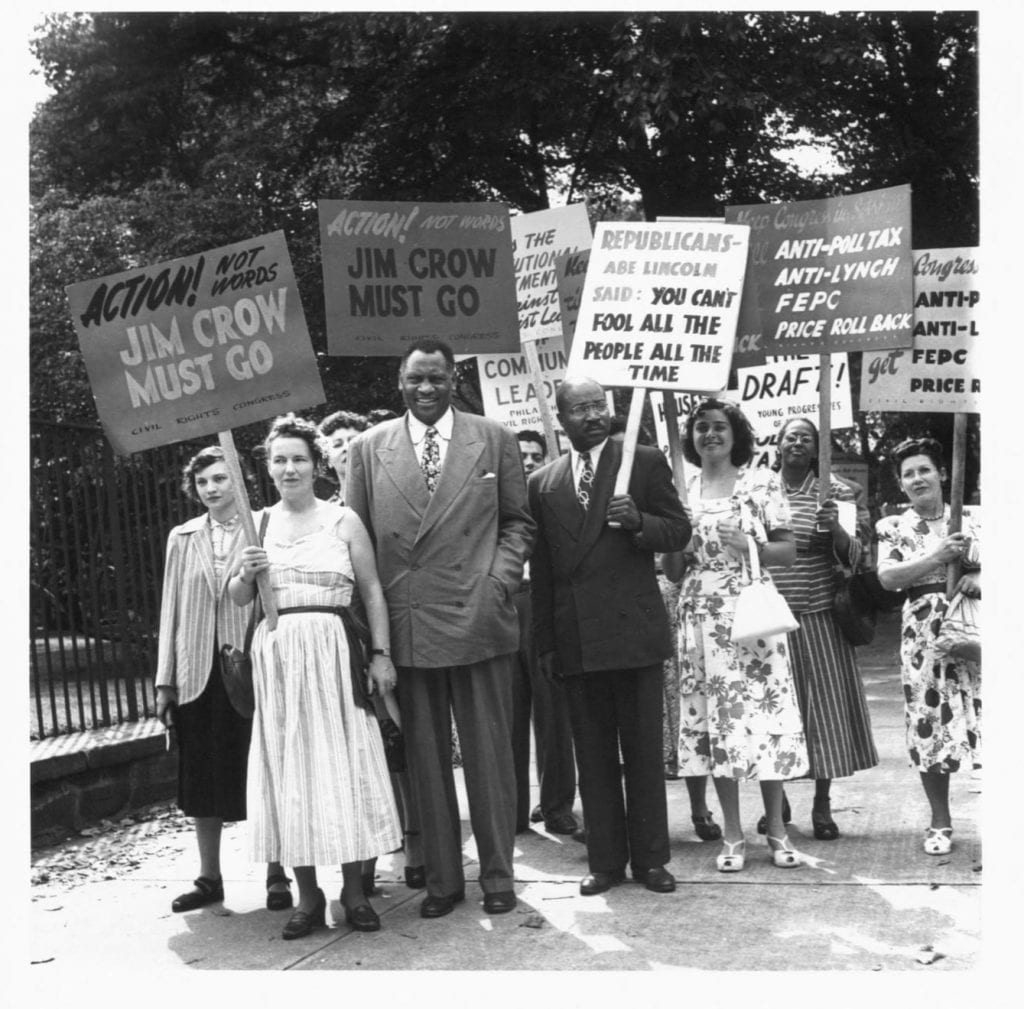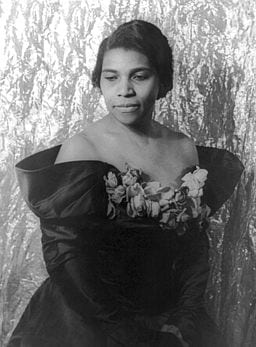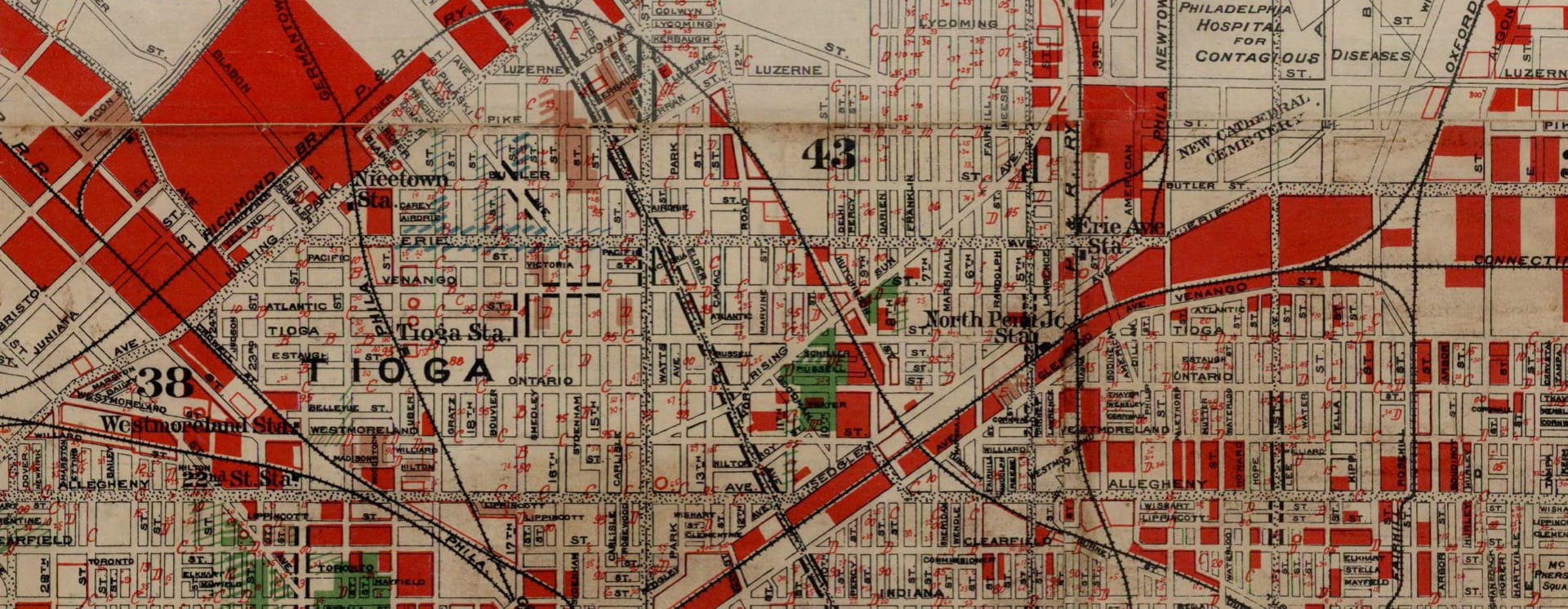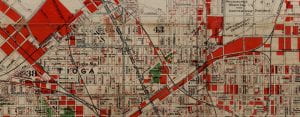In the third episode of Lovecraft Country, Letitia Lewis purchases an old house in a white upscale neighborhood that she plans to restore and turn into a boarding house for Black writers and artists.1 Letitia expects the hostility which comes from her white neighbors, but not an attack from the house itself. Her spirit-haunted photographs and historical research reveal a horrifying secret. The house is haunted by the spirit of a malevolent scientist as well as those of the Black people he kidnapped, tortured, and ultimately killed in the name of science.
Redlining
Governments and institutions, as well as individual homeowners and realtors, collaborated to uphold racial segregation in housing during the Jim Crow era. These included redlining, racial covenants included in home deeds to prohibit sale or rental to people of color, discrimination in rent prices, and policing.
This 1934 Map of Commercial and Residential Philadelphia (also held in our Maps Library) shows the practice of redlining. The National Housing Act of 1934, intended to support home ownership during the Great Depression, led to the codification of housing discrimination through redlined maps which ranked areas by the racial groups living in them. By withholding mortgage capital from sections of the population, the Act resulted in significant racial segregation and contributed to poverty and lack of investment in inner-city areas.
The above map shows “Racial concentrations” (Jewish, Italian, “colored”), “Location ratings,” “Age” (approximate date of development), real estate sales prices, and “Industrials.”
Carol Anderson’s White Rage is a history of the ways in which white Americans worked after the Civil War to roll back the rights, freedoms, and financial/social gains of Black Americans. It includes a section on redlining as well as the other forms of ongoing harassment (which Letitia receives from her white neighbors). It also contains information about other themes from the show, like sundown towns, race massacres such as Tulsa, and Emmett Till’s lynching.
Our collection Julius Lazarus photographs and related materials, circa 1910-2008 includes photographs documenting poverty and rent evictions in New York City and protest rallies against racial segregation and discrimination. Many of its photographs also document Paul Robeson and W. E. B. Du Bois‘ travel and activism in the United States and abroad.2 The following photographs feature Paul Robeson at marches or demonstrations.


Science and Racism
In this episode, Hippolyta Freeman discovers an orrery in the boarding house. Although her orrery is magic, many beautiful clockwork orreries exist and model the movement of planets and other bodies in the solar system. NASA’s online orrery shows the current position of planets, major moons, comets, and several space craft.
Unfortunately, science and scientists have a long history of racism across disciplines. Most commonly known is scientific racism, the pursuit of evidence of biological inferiority of people of color. Racism in medical experimentation and medical care persisted throughout the 20th century and into the present. In this episode, the experimentation on Black people was done by an astrophysicist. We learn later that these likely had to do with the secret society of which he was a member, but it shows that even a discipline concerned with studying the stars isn’t immune to racism. As part of her research to learn the names of those killed, Letitia Lewis photographs the spirits.3
In our own world, racism in astrophysics has made international news with the development of observatories on the Hawaiian mountain Mauna Kea, a sacred site to many native Hawaiians. As work on a thirty-meter telescope has been protested and counterprotested, many in the science community have made racist and dismissive statements which ignore troubling histories of colonization. One letter, sent by a national medal of science winner, described the protestors as “attacked by a horde of native Hawaiians who are lying.” Others in the community, such as the graduate students and post-doctoral fellows, created a letter calling on their institutions (which had invested in the telescope) to oppose the criminalization for protestors.
Marian Anderson

During an argument in the episode, Atticus’s father, Montrose, angrily puts on a record of Marian Anderson singing Schubert’s Ständchen D. 957 no. 4. Marian Anderson, born and raised in Philadelphia, was one of the great contraltos of the 20th century. The Special Collection Library has a small collection of materials related to Anderson, including a program from one of her concerts.
Continue reading about Episode 4 : A history of violence
Footnotes
1. The Langston League’s syllabus for this episode notes the importance of 19th century Black boarding houses to the Colored Conventions. Such boarding houses provided space for community, collaboration, conversation, and activism.
According to their website, “the Center for Black Digital Research, #DigBlk, is a collaboration between the College of Liberal Arts and the University Libraries, and works closely with The Eberly Family Special Collections Library and Research Informatics and Publishing. Home to the award-winning Colored Conventions Project, Douglass Day, and the Black Women’s Organizing Archive, @DigBlk is a public-facing digital research center with a focus on supporting innovative scholarship; fostering student training and leadership; building pipelines that diversify the professoriate; and preparing students for diverse careers.”
For more information, read The Colored Conventions Movement : Black Organizing in the Nineteenth Century edited by @profgabrielle, @jimccasey1, and @Sarah_Patterson
Penn State Libraries also provide a Guide to the Colored Conventions. back to text
2. The experience and activism of both men are recognized at Penn State by the Paul Robeson Cultural Center, named in 1986, and the Classics and Ancient Mediterranean Studies (CAMS) 2021 conference, “W. E. B. Du Bois and the Ancient Mediterranean.”
The Pennsylvania State University, HUB-Robeson Galleries records, 1989-2002 and Charles L. Blockson Collection on Paul Robeson, 1894-2005 contain additional information. back to text
3. For examples of spirit and fairy photography in our collections, see the following from Heinz K. and Bridget A. Henisch collection of the history of photography, 1842-1995 : spirit photography (02350_Box 13 : Folder 01); two spirits appear as a woman sleeps (02350_Box 98); ghosts (02350_Box 28); and a fairy scene (02350_Box 77). For a volume of spirit communications recorded in manuscript during a series of short séances, please reference Psychic instrument : Thursday sittings at II PI : (seances 1944-1945) : manuscript. back to text

